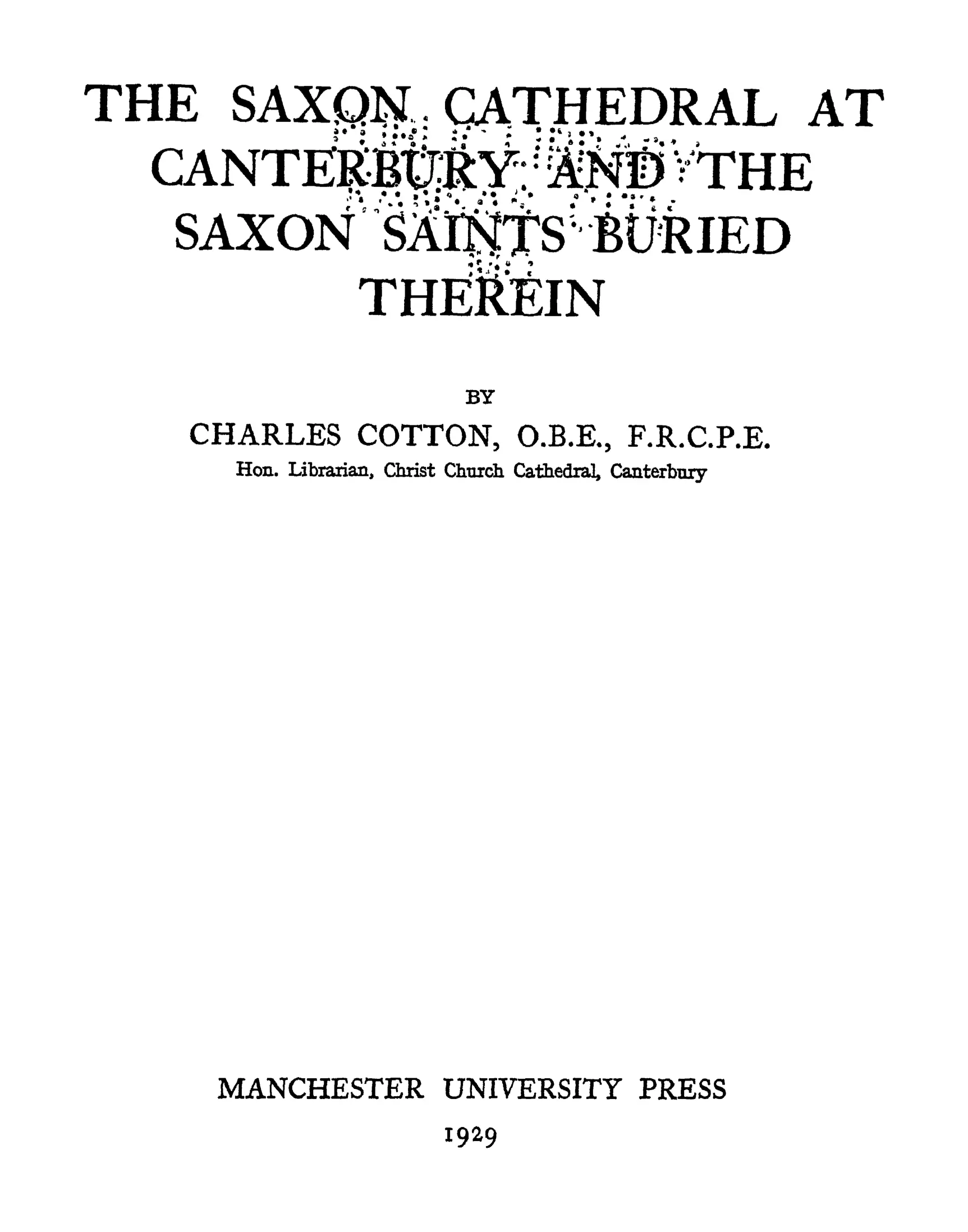
Cotton, Charles. The Saxon Cathedral at Canterbury and the Saxon Saints Buried Therein. Manchester: Manchester University Press, 1929.
The Saxon Cathedral at Canterbury and the Saxon Saints Buried Therein
Archaeological History Benedictine Monks Gothic Architecture Lanfranc Saxon Cathedral St. AugustineThe Saxon Cathedral at Canterbury and the Saxon Saints Buried Therein” by Charles Cotton provides an in-depth exploration of the history and significance of the Saxon Cathedral at Canterbury, as well as the lives and legacies of the Saxon saints interred there. The book primarily serves new members of archaeological societies and general readers interested in the early ecclesiastical history of England. Cotton draws on historical writings to piece together the narrative of the cathedral from its origins around 602 AD under St. Augustine to its reformation in the 16th century when it transitioned from a Benedictine priory to a college of secular canons under Henry VIII. The Saxon period saw the cathedral served by clergy who lived communally but did not adhere to a monastic rule, a practice that was echoed during the Reformation.
Cotton’s work highlights the archaeological and architectural evolution of the cathedral, emphasizing contributions from key figures such as Archbishop Lanfranc and St. Odo. Lanfranc, arriving in 1070, undertook extensive rebuilding efforts after discovering the cathedral in ruins. His reconstruction efforts, completed in seven years, laid the foundation for the Gothic structure seen today. Cotton also pays tribute to influential archaeologists and historians like Professor Willis and Sir William St. John Hope, whose meticulous research and interpretations have been instrumental in understanding the cathedral’s history. The book meticulously details the saints buried within the cathedral, providing new material on their anniversaries and underscoring their enduring spiritual and cultural impact .area of Durovernum (present-day Canterbury) during Roman times.